Hijab, Burqa & Commonsense
The visual of students getting in the streets over the simple hijab issue was very disappointing, right or wrong it’s a separate issue. These are petty issues which are being made to look big by the media, social media and the politicians. Everybody is acting in a very stubborn manner and also today’s generation easily gets influenced by political and religious identity. Let’s look into this particular Hijab issue and try to get some sense on the matter.
Diverted Issue
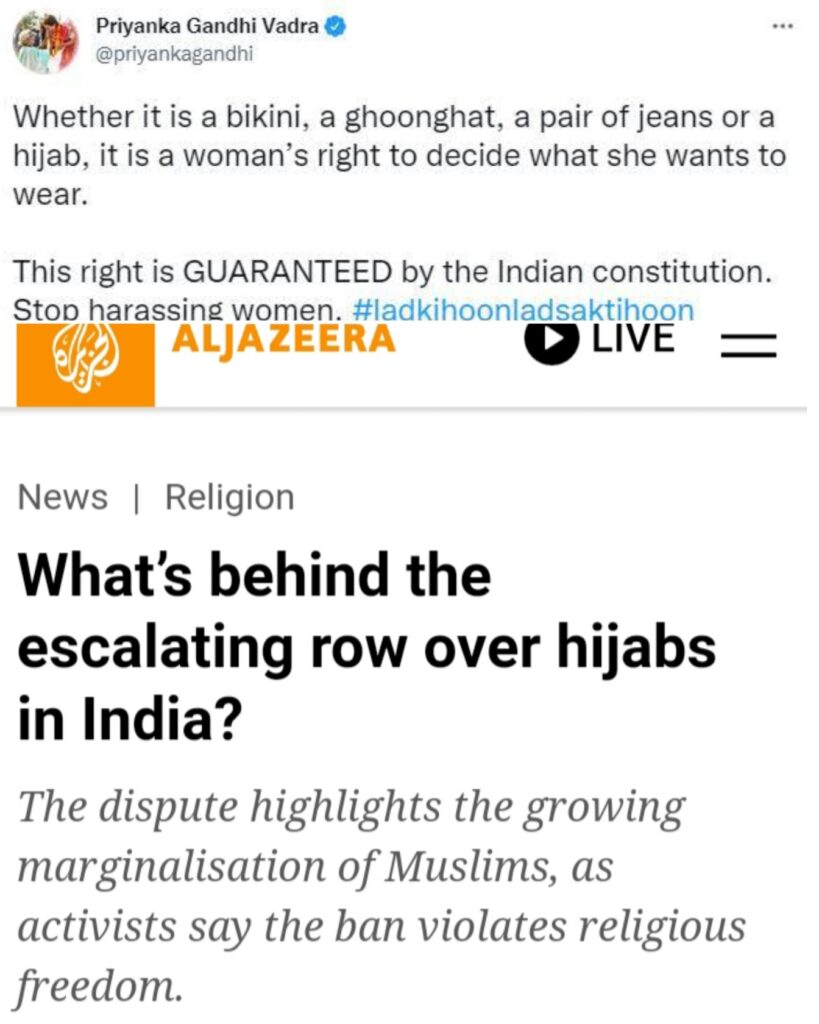
Every individual has the right to wear what they want, our constitution has given us that right. There have been widespread protests across the country in support of hijab by some people. Social media personalities and some celebrities also jumped in the protest.
“The only issue is with hijab being not allowed in school premises, other issues are being made up. A narrative is being built that Hijab & Burqa is totally banned in India”.
It’s totally a wrong notion which is being projected in social media trends, memes and also international media.
These kind of distracted protest takes the focus from the core issue. In India there is no restriction on any kind of dress, everybody is wearing what they want. The issue is only with educational institutes wherein these institutions also have rights to lay there own rules and regulations.
Why Hijab should be allowed?
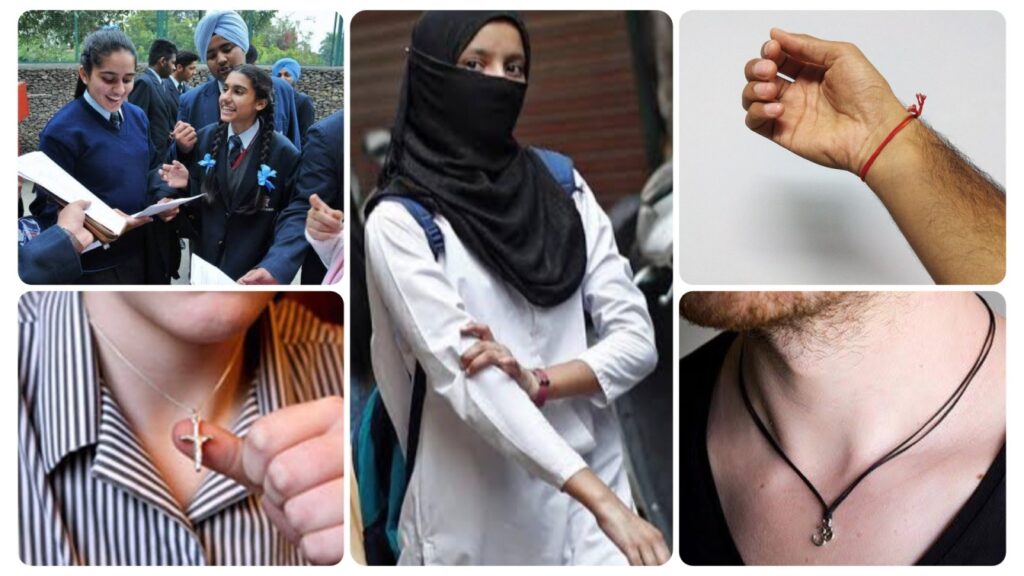
When we say uniform, especially School uniform, the attire for boys is a shirt and pants with shoes. The attire for girls are top and skirt or salwar kameez with shoes. This is the same for everybody. Here also some hindu students wear a dhaga in the wrist or some kind of a religious chain in the neck and girl students wear bindi in the forehead also, christians wear cross in the neck, shikh students wear turban. Similarly if a muslim girl wants to wear a hijab then it shouldn’t be a problem. At least these small exceptions could easily be made.
“Many people may not be aware that in the year 2012 Kendriya Vidyalaya had introduced a new dress code for Muslim girl students which allows them to wear headscarves in their schools”
State government can also easily make these small provisions. Students from a young age should learn religious tolerance.
But what if somebody wants to go the extreme like burqa, saffron clothes, skull cap, nun type of dress, then school has every right to prohibit it. A line has to be drawn between the manageable and inappropriate. Our constitution has given rights to every individual to practice their religion, but the same constitution has also given rights to these educational institutions to frame their own campus rules and regulations. Common sense should prevail from both sides, school administration and also the parents. Education should be the only priority.
Extreme Reaction
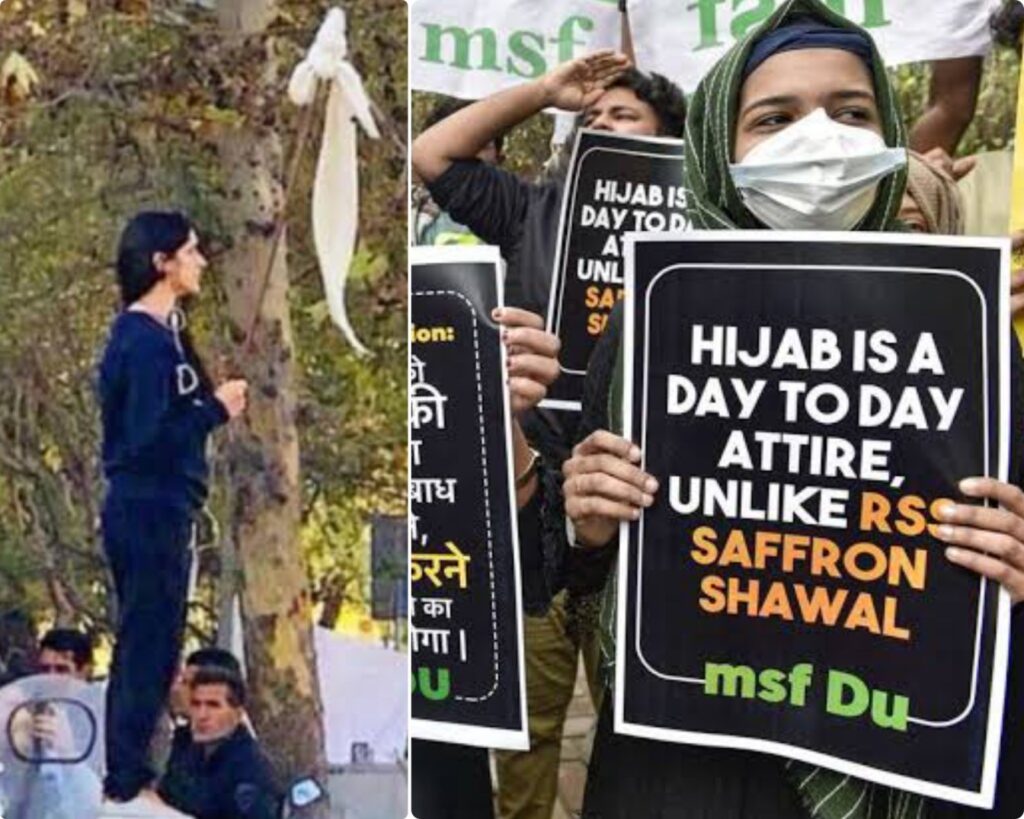
Right: Indian women protesting their right to wear hijab
How time has changed. Not very few years back many muslim women were fighting against these male oriented patriarchal old age traditions, now many are fighting to keep these traditions, be it burqa or hijab. It’s a well known fact that the ruling BJP Govt and Muslims are not fond of each other. But still many of our muslims citizens’ reactions are very extreme, whatever the BJP govt does, the exact opposite is done. If the BJP Govt would have made hijab & burqa mandatory for muslim women, then demand for removal of such regulations would have been even louder.
“It’s like a response of a community being in oppression and wanting to rebel against anything the Govt does, right or wrong is a secondary issue”
We need to judge the Govt on a case to case basis. Our fondness or hatred towards a particular Govt or a party should not blind our judgement of right or wrong.
Similarly muslims have been subjected to a typical type of stereotype profiling around the world. People often fail to have a broader mindset towards the muslim community. This results in a similar type of reaction from them also, it’s like Newton’s 3rd law of Motion. That’s why we are seeing conflicts around the world.
“Many Muslims face daily racism in their lives around the world, including in India. Which results in a feeling of injustice among them. Wearing a hijab or burqa sometimes becomes like a rebellious attitude against the oppression they face from the critics of Islam. It has kind of becoming a sign of resistance.”
One should follow their tradition for the right reasons, not by force, by somebody’s else will or not to prove anybody anything.
Selective Outrage
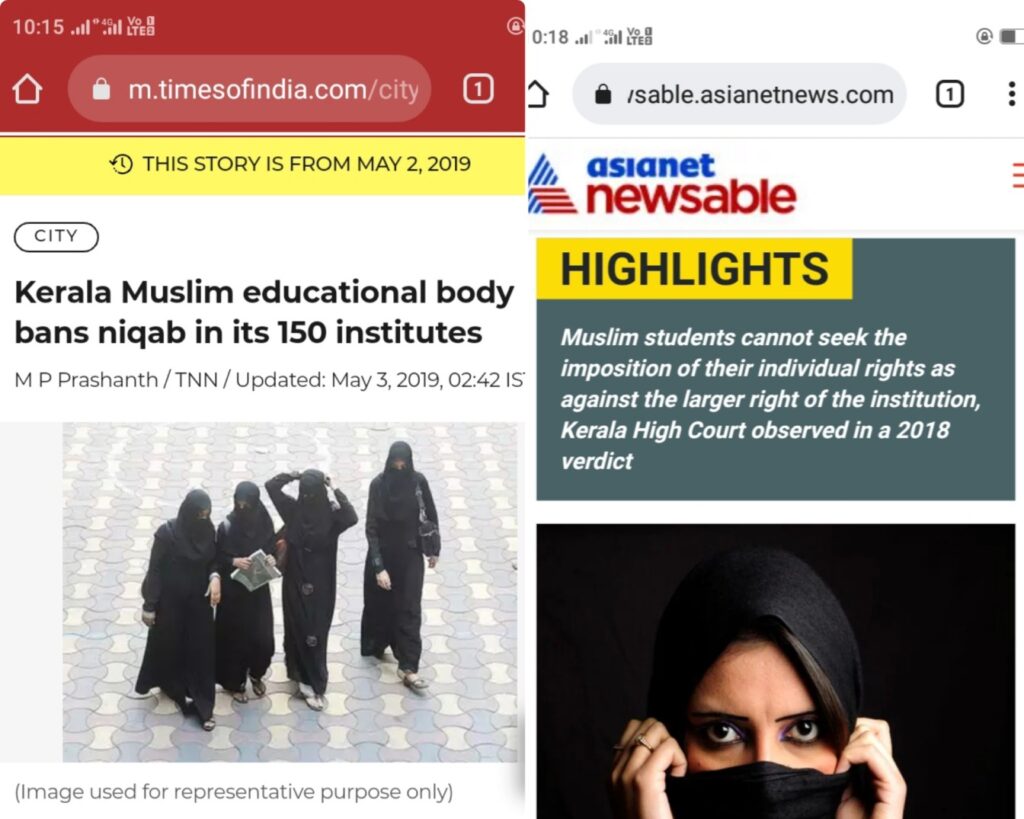
Right: Kerela High court rejected the plea of the petitioner to wear hijab in schools
In May 2019, Kerala’s Muslim Educational Society (MES) which controls 76 educational institutions including CBSE affiliated schools, had banned any dress that covers the face of students on all the campuses under its control.
Similarly the Kerala High Court in December 2018 while hearing a petition filed by two students of a school in Thiruvananthapuram, ruled in favour of the institution. Justice A Muhamed Mustaque upheld the institutions rights to decide the dress code and asked the petitioners to follow the schools rules.
At that time there was no outrage, no social media noise, no particular news coverage by the mainstream media. Maybe because Kerala is not a BJP governed state. This type of selective outrage questions the motive of the protest and people also loose faith in that issue.
Turban Example
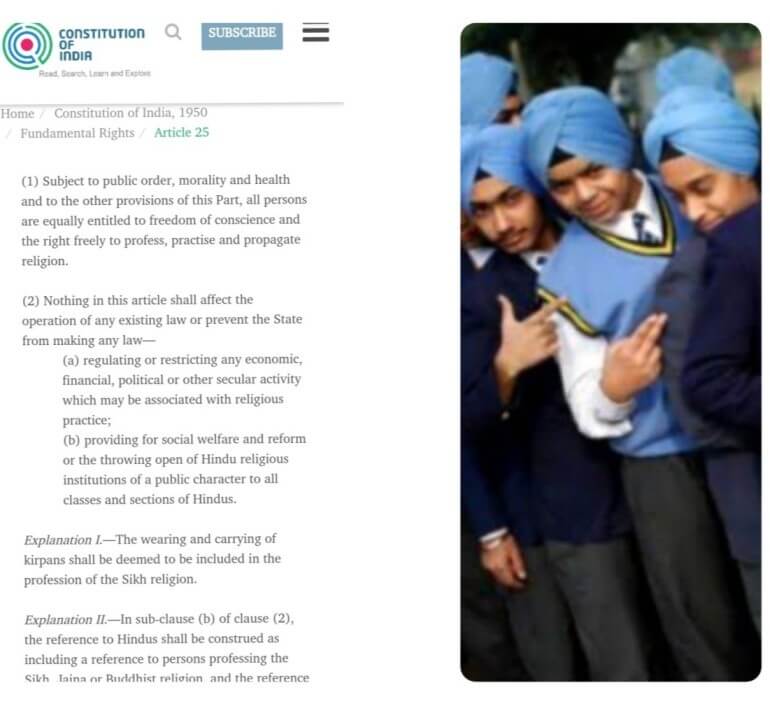
Right: Sikh students in turban and uniform
If Muslims want hijab compulsory then they should follow the Sikhs turban example. The right of Sikhs to wear turban has been somewhat constituted in our constitution with Article 25(2)(b). Still the matter of fact is that the constitution has not specifically mentioned anything about turban, but has allowed to keep kirpan with them always as per the mentioned article.
We all know that Sikhs are not allowed to cut their hair as per their religious text, so to keep their hair intact they wear a turban and this practice has been followed since ages. But wearing of the hijab wasn’t a very relevant practice a few decades back, in recent years this practice has grown among muslim women.
Burqa, Choice or Mandatory
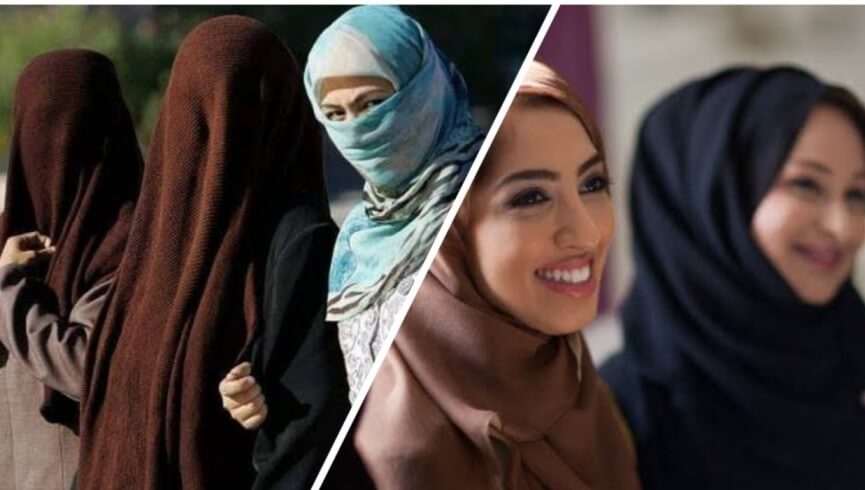
It’s assumed that very few women really wear Burqa out of their own choice. Many wear it because of the cultural interpretation of Islam that has been taught and implemented by elders of that community. Some wear burqa because everybody around them wear it, some do it because of family pressure, some wear it genuinely out of their choice. There’s no simple and easy answers to it. We can only interpret.
“But for a layman or a non muslim, Burqa brings an uneasiness, the feeling of suffocation, feeling of being shackled, it’s like being in a PPE kit. Muslim women might feel the suffocation, but later it becomes habitual and normal”
Do they really want to wear Burqa? Deep down in the heart they themselves will get the answers. In Middle Eastern Arab states like Afghanistan and Iran, hijab is compulsory, but few women are starting to protest against this practice.
Students are just pawns
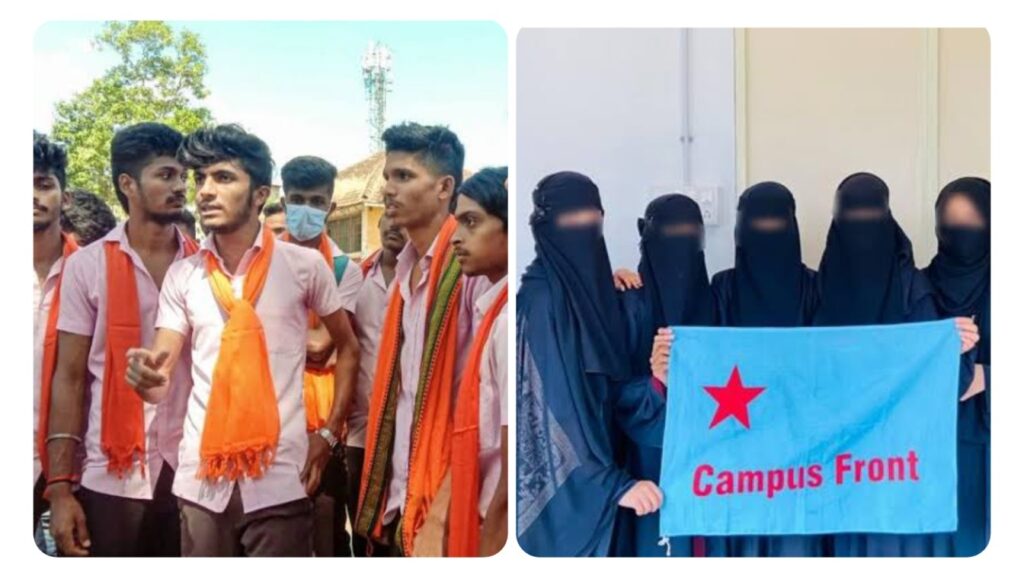
Right: Students influenced by CFI
The visual of a muslim girl student being surrounded by agitators with religious slogans was a very shameful thing. In protest of Burqa/hijab many hindu students wore saffron scarfs. It’s unlikely that these students went to the market/shop and brought these scarfs by themselves. Obviously it was given to them by hindu extremists.
Similarly the question also arises how four simple school going girls got the resources to approach the high court. It’s not easy to approach the court if you don’t have the resources, especially in sensitive matters like this one.
It’s also alleged this girls had the backing of Campus Front of India (CFI) a Muslim extremists group. As per some news it’s alleged that CFI influenced these girls to wear hijab. According to the school administration these girls earlier used to wear proper school uniforms on campus. The demand for hijab started from november 2021 only. For whatever reason these all are being done, the truth is that students future are being hampered. These students are too young to understand these. It’s safe to assume that these students don’t have a wise head above them.
A Small room at the entrance of Campus
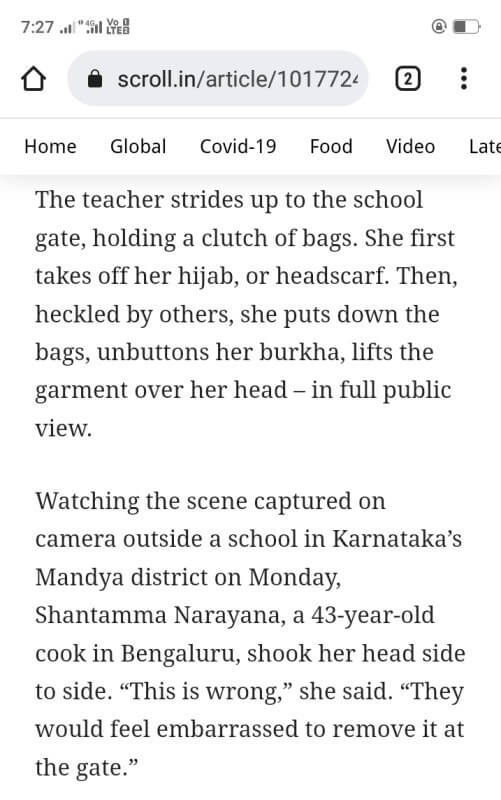
The visuals of women taking out their Burqa in the open before entering into the School/College campus doesn’t seem correct. It’s kind of a humiliation for them. Those who realize this will understand this and those who don’t, they don’t understand the culture barrier for women in India. A small private room could easily be made in the campus entrance where muslim women could take out their Burqa before entering into the campus. At least this much modesty every institution could do very easily.
Importance of Education
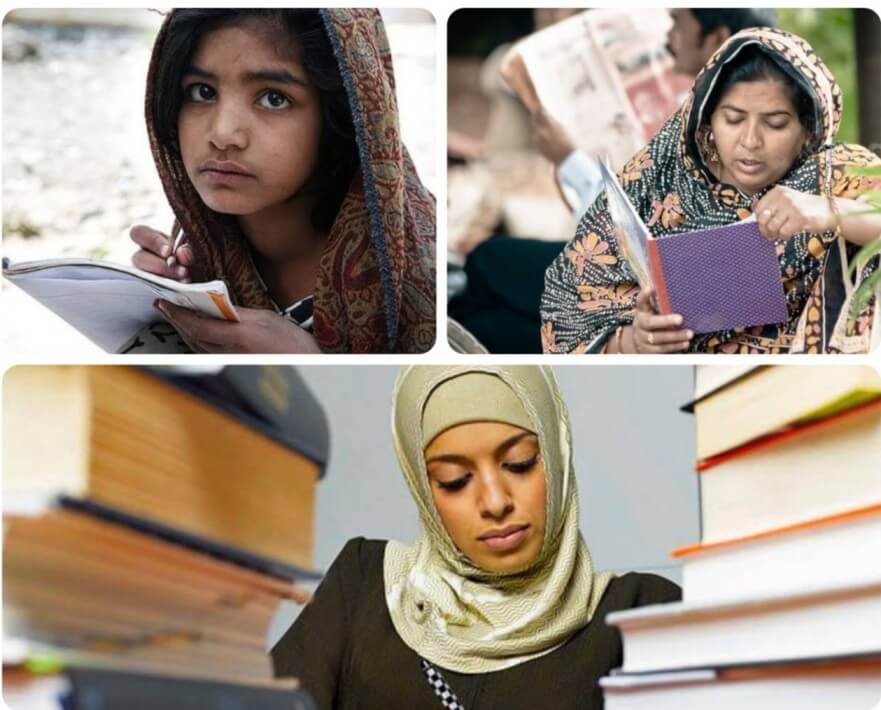
If we want to move forward as a secular society, education is a must for everybody. As per Sachar committees 2006 report, muslims are the most last in seeking education and their condition is worse than the SC/ST community. If we want to move forward collectively then the Govt should encourage more muslims to seek education, hence these small exceptions for hijab could easily be made. An educated women community could bring wonders to women empowerment and a society as a whole. The more people get educated, the more the country prospers and the more we also prosper.
Conclusion
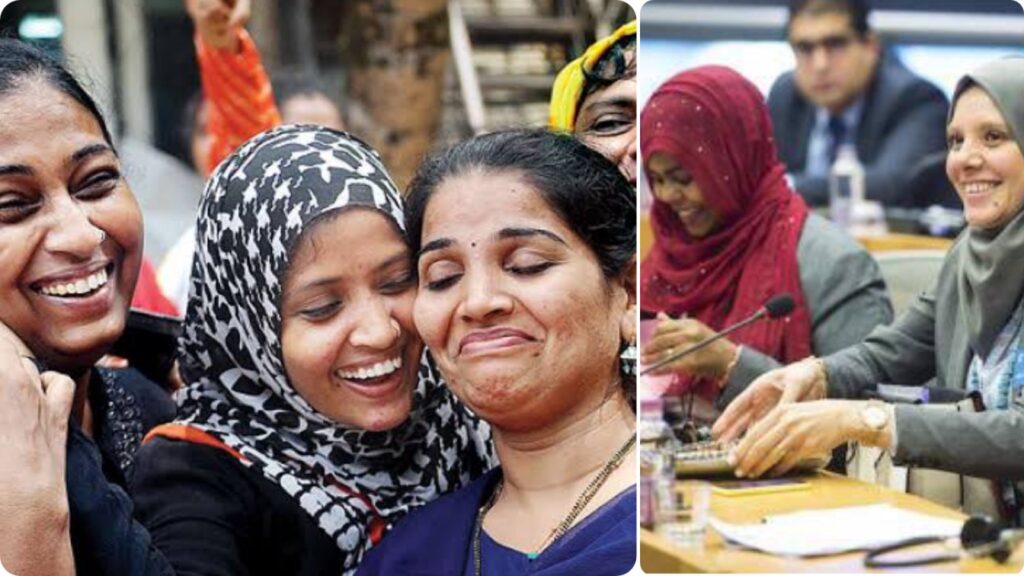
But the bottom line is that the current issue around hijab or Burqa is not about religion or about the girl’s dignity, but the matter is about petty politics of religious identity and the power game. Nobody is bothered about the well being of a woman. On the other hand, these girls also should not deprive themselves of education. Stubbornness achieves nothing, be it the Schools, the community or the Students.
Every community has their own women issues including the muslim community.
“Muslims women should not be just confined to the Hijab or Burqa issue, but should also focus on the actual problem they are facing in their community, Otherwise nothing will change on ground even if the court gives a verdict in favour of Hijab”

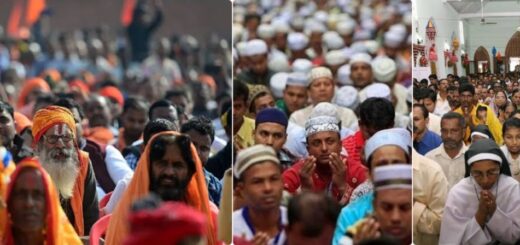

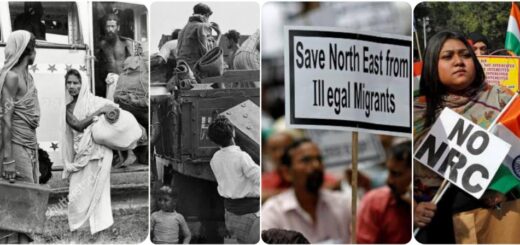










Recent Comments